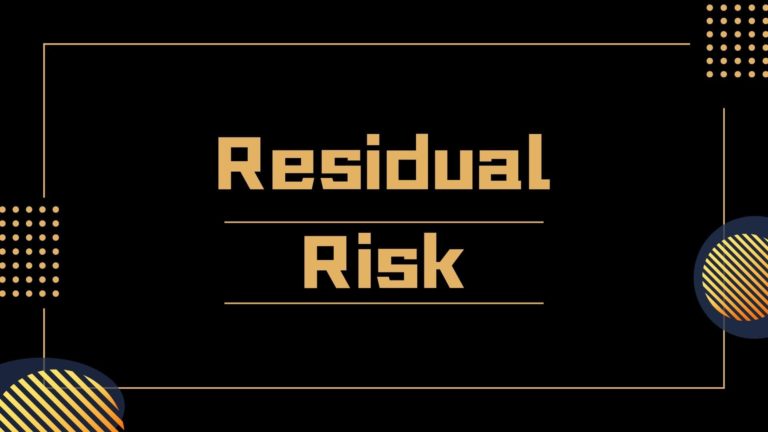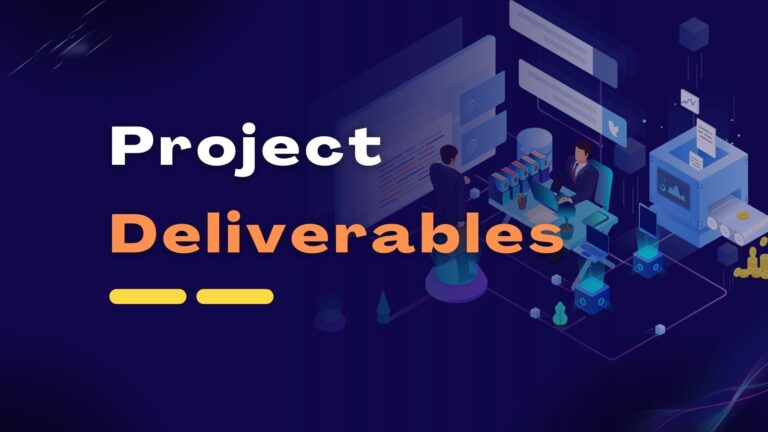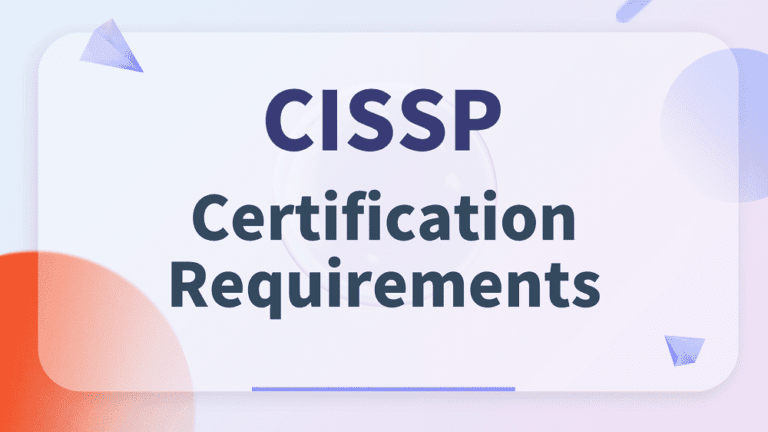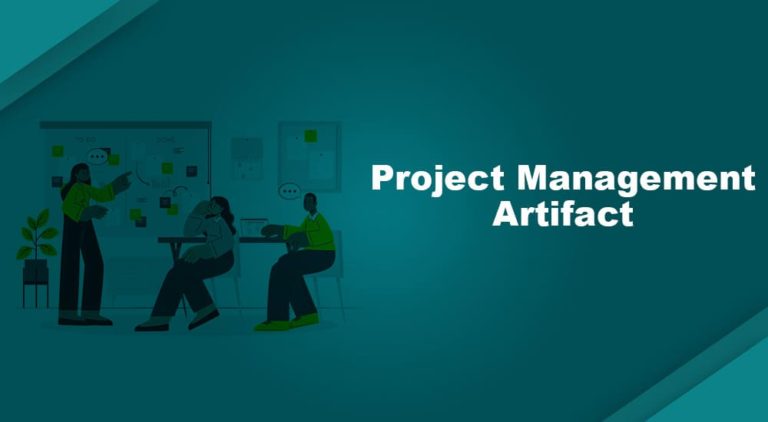Today we will discuss the program in project management and program management. These are essential concepts, and you must know these terms and how they differ from the project, project management, portfolio, and portfolio management.
Let’s start with an example.
Let’s say that the government has proposed two different construction projects. The first project will be the construction of premium villas, while the second project will be the development of group housing. The length of time for the completion of both projects is twelve months.
The villas are reserved for diplomats and other political guests, while the group housing is for the lower-level employees.
Let us say you have won these two individual projects.
So, how do you plan to oversee the management of these projects?
Will you handle each one individually, or will you put them together and manage the projects as a whole?
The answer is you will manage both projects under a program.
What is a Program in Project Management?
A program will comprise multiple projects that are very similar to one another.
If you group similar projects, you will have more flexibility, more negotiating leverage in the procurement process, and improved resource control.
You can manage activities in a coordinated manner via a program, which allows you to accomplish benefits you would not be able to achieve through managing those projects individually.
In most cases, projects are one-of-a-kind endeavors that are only undertaken temporarily and are terminated once their goals have been met. Nevertheless, a program is not considered finished until all its projects and subsidiary programs have successfully delivered the benefits they were designed to provide.
Examples of a Program in Project Management
I have given an example of a program in the introduction. However, for clarity, I will now present you with two further instances of programs used in project management.
Let’s imagine your company is working on two different projects. The first project will involve the construction of a private office building, while the second project will involve the construction of a school building by the state government.
How do you plan to handle the management of these two projects?
Although they are separate projects, you will manage them under the same program because both projects involve construction. All of the initiatives falling under the purview of a program are not required to come from the same client. Although the client could be different, the project itself should remain consistent.
Now, let’s look at yet another example of a program.
Your company has been awarded two separate projects by a health insurance provider to develop software for health insurance claims processing and medical billing. The individual and group insurance software products are included in the package.
Due to the fact that these initiatives are very comparable to one another, you will manage them under a program.
Program Management
Managing more than one similar project under a single umbrella for better coordination and efficient resource utilization is called program management.
A superior level of control over many projects is accomplished through program management, which is not possible when each project is managed independently. It promotes improved coordination among projects and lessens the likelihood of conflicts.
Examples of Program Management
The followings are a few examples of programs in project management:
- Both examples discussed above can be managed under a program to get a discount in material procurement and effectively utilize and share the resources as both are construction projects.
- In the example of insurance projects, the functionality is similar, so managing them together will save effort, resources, and time.
Types of Programs in Project Management
Different programs have different strategies. Projects with specific strategic objectives are grouped for greater effectiveness.
Let’s have a look at different types of programs in project management.
Visionary Programs
For organizations to realize their goals, they implement forward-thinking programs. Because the criteria for these projects originate from upper management and are intrinsically linked to the organization’s long-term goals, the common methodology for tackling them is a top-down approach.
Emerging Programs
Emerging programs typically begin with various initiatives, all working toward comparable objectives. Subsequently, a program structure is developed to bring these projects together. A program manager’s responsibility is to facilitate collaboration between these different projects.
Compliance Programs
If projects are initiated because of changes in government rules, regulations, or policies, they fall under compliance projects. Such projects are grouped to avoid penalties and stay in business.
Program Manager in Project Management
The individual designated as being in charge of managing the program is referred to as the program manager. The program manager is responsible for ensuring that the strategic objectives of the program are met by the various projects that are part of the program, while the project manager is responsible for managing individual projects.
Objectives for the Program Manager
- The program manager’s goal is to utilize resources effectively, manage interdependencies among projects, and resolve constraints and conflicts.
- The program manager resolves issues at the program level, manages change requests, and allocates the budget across projects within the program.
- Project managers will work with the program manager to ensure project management documents are aligned with program documents.
- The ultimate goal of a program manager is to ensure benefits are realized and strategic objectives are achieved.
Responsibilities of a Program Manager in Project Management
A program manager’s responsibilities include but are not limited to:
- Define outcomes of the program’s components and effective communication
- Monitor benefits realization of program components
- Lead and coordinate program activities
- Proactively assess and respond to risks of the program
- Resolve scope, schedule, cost, quality, resource, and risk issues within a shared governance structure
- Tailor program management activities and processes to address cultural, socioeconomic, political, and environmental differences in the program.
- Interact with the project or other program managers to provide support and guidance for program activities
- Interact with portfolio managers for resources and prioritization of programs.
Program Management Performance Domains
The program manager is responsible for managing programs by performing tasks in five distinct program management performance domains, all of which are interconnected and interdependent. Throughout the program, these domains operate simultaneously and interact with one another.
- Program Strategy Alignment
- Program Benefits Management
- Program Stakeholder Engagement
- Program Governance
- Program Life Cycle Management
#1. Program Strategy Alignment
The performance domain of “Program Strategy Alignment” identifies results to deliver advantages aligned with the firm’s strategic goals and objectives. This website hosts three essential documents, which are as follows: business case, program charter, and program roadmap.
Business Case
Organizations build strategies to define how they will achieve their vision. For this, they develop a program business case that has a cost-benefit analysis to ensure the cost spent on the program will provide benefits.
Program Charter
After the business case has been developed, a steering committee will authorize a program by issuing a program charter. This charter will outline the high-level risks and limitations associated with the program, as well as the program’s scope and purpose.
Program Roadmap
The program manager will have access to a program roadmap, which is a chronological representation of the program’s intended direction and a graphical representation of dependencies between major milestones and decision points that reflect the linkage between the business strategy and program. The program manager will be responsible for maintaining the program roadmap.
#2. Program Benefits Management
The performance domain known as Program Benefits Management is responsible for determining, analyzing, planning, and delivering the benefits made available by the program. Program Benefits Management is an approach that is utilized by the program manager to continuously discover and evaluate the value and impact of program benefits.
Benefits Identification
In this step, you will examine the data at your disposal concerning organizational and company strategies to recognize and quantify the benefits that will be recorded in the Benefits Register. The Benefits Register is used to measure and communicate the delivery of benefits throughout the program. It also contains a list of benefits that are planned to be provided by the program.
Benefits Analysis and Planning
During this step, you establish a baseline for the program benefits plan you developed and communicate with all relevant stakeholders. This baseline plan includes the measurements and structure for monitoring and controlling the program’s benefits to ensure that it continues to meet its objectives.
Benefits Delivery
This phase ensures that the program delivers the expected benefits defined in the benefits management plan. You will update the Benefits Register with the associated benefits in all cases.
#3. Program Stakeholder Engagement
Program Stakeholder Engagement is a performance domain that identifies and analyzes stakeholder needs, plans and manages expectations, and communicates with them to get their support.
Stakeholder Identification
During this phase, all stakeholders will be identified, and their information will be entered into the stakeholder register. This register identifies the various stakeholders, classifies their involvement in the program, and outlines other characteristics that the Program Manager can utilize to influence those stakeholders.
Stakeholder Analysis
After identifying all the important stakeholders, the next step is to classify them for further analysis. The classification draws attention to distinctions in their requirements, expectations, and spheres of influence. One of the most common and well-known models for stakeholder analysis is a grid organized according to power and interest. For more extensive initiatives, a stakeholder map is drawn to depict the support and influence of the many stakeholders graphically.
Stakeholder Engagement Planning, Engagement, and Communication
This activity outlines how all program stakeholders are engaged throughout the program. In this phase, the stakeholder register and map are analyzed, resulting in a stakeholder engagement plan. This will be used for effective engagement and communication of key stakeholders throughout the program.
#4. Program Governance
Program Governance is a performance domain that enables and performs program decision-making, establishes practices to support the program, and maintains program oversight.
Governance Practices
The Program Governance plan is where the documentation of the program governance framework can be found. This plan can either be a stand-alone document or a subsection of the program management plan. This plan’s objectives are to provide oversight and management of the program and support. This plan is referred to at various points throughout the program to ensure that it is being implemented in a manner that is consistent with the governance standards that have been agreed upon.
Governance Roles
It is essential to the success of programs that persons responsible for program governance and program management collaborate with one another. It is also necessary for program managers to work together with the governance board to find solutions to any problems that are caused by conflicts.
Commonly utilized roles in program governance include Program Sponsor, Program Governance Board, Program Management Office (PMO), Program Manager, and Project Manager.
Governance Design and Implementation
Establishing governance standards and deciding who will participate are the first steps in developing a program’s governance structure. After that, an appropriate framework for program governance will be designed and implemented.
#5. Program Life Cycle Management
Program Life Cycle Management is a performance domain that manages program activities required to facilitate the program definition phase, delivery, and closure.
Program Life Cycle
Programs function similarly to projects. The program life cycle has activities similar to the project life cycle. However, the program has activities that involve the coordination and sequencing of multiple projects.
Programs often last multiple years. Despite this, their life cycles are identical and consist of the same three stages regardless of how long they live.
Program Definition Phase: This phase will authorize the program and develop the roadmap required to achieve results. The creation of program business cases and the program charter are components of defining the program. Following the program’s approval, a plan for its management will be established.
Program Delivery Phase: This phase consists of activities performed to achieve the benefits of the program in accordance with the program management plan. Initiation, planning, execution, transition, and closure of individual components (projects) take place concurrently with delivery, transition, and maintenance of benefits.
Program Closure Phase: This phase includes the activities necessary to transition the program benefits to the sustaining organization and formally close the program in a controlled manner. When a program is closed, it may be transitioned and closed or ended early, or work may be transferred to another program.
Program Activities and Integration Management
Managing a program entails coordinating its many moving parts to accomplish the objectives originally outlined for it. At the program level, the applied techniques assist in optimizing the costs, schedules, and efforts of individual components to acquire control and give the maximum benefit possible. This is something that may not be accomplished individually at the component level.
Program activities refer to all work carried out within a program as part of the administration of the program as a whole.
Throughout the entirety of the program life cycle, program integration management serves as a fundamental activity. It comprises all the actions required to identify, define, combine, unify, and coordinate the many components that make up the program.
Mapping of Program Management Life Cycle Phases to Supporting Activities as per PMI
Let’s take a look at Program Change Management. This activity has many sub-activities. Each sub-activity has inputs and outputs.
A program life cycle has three phases:
In the Program Definition phase, there can be Change Management activities like assessing the change (Program Change Assessment) and planning the changes (Program Change Management Planning).
In the Program Delivery phase, monitoring and controlling of change management is done (Program Change Monitoring and Controlling).
In the Program Closure phase, there are no sub-activities of Program Change Management.
Agile Program Management
Even though the roles people play and the environment they operate in are different in Agile, the overarching objective of program management is still to deliver strategic benefits for the firm.
Like traditional program management, the program’s objective is to be achieved as per the Program Vision Statement.
As an output of the program vision, a Program Product Backlog is established. This backlog is subsequently prioritized, which is referred to as the Prioritized Program Backlog. The Prioritized Program Backlog comprises the Prioritized Product Backlogs for every one of the projects that are part of the program. The Prioritized Program Backlog meeting is held at regular intervals ranging from two to six months.
Scaling Agile for the Enterprise
The processes listed below are followed to scale Agile for the enterprise.
Create Program Components: Along with formulating the company’s mission statement, this phase entails writing user stories.
Review and Update Scrum Guidance Body: The Scrum Guidance Body regulations are adapted by using the scrum guidance body members’ regulations and inputs, which are recommended for the programs.
Create and Groom Program Backlog: By considering the inputs of the program vision statement, the prioritized program backlog, standards, and the inputs of the Product Owner and the Scrum Master, the Program Backlog is refined, risks are identified, personas are developed, and deadlines for the implementation of projects are updated.
Coordinate Program Components: Using inputs such as the user story DONE definition, known dependencies, prioritized program backlog, and potentially shippable deliverables from projects, impediment logs, and dependencies are updated through the use of meetings such as a scrum of scrum (SoS).
Retrospect Program Releases: Through the Retrospect Program meetings, agreed-upon, actionable improvements are documented by the assignment of items and due dates for each item.
There are different roles in the Program Management of Agile. The Program Product Owner, the Program Scrum Master, and the team itself are the primary responsibilities (dev, testers, and other stakeholders of the projects).
Program Product Owner
The Program Product Owner defines the overarching strategic goals and top program priorities. A Program Product Owner is a person who is accountable for maximizing the business value of a program. This is accomplished by clearly articulating the customer’s requirements and maintaining the program’s business justification. Additionally responsible for managing the Program Product Backlog is the Program Product Owner.
Additionally, the Program Product Owner is responsible for appointing Product Owners for individual projects and ensuring that the vision, objectives, outcomes, and releases of individual projects are in accordance with those of the program.
Program Scrum Master
The Program Scrum Master is a facilitator who ensures that all project teams in the program are provided with an environment conducive to completing their projects successfully. Everyone involved in the program receives training and instruction in Scrum practices from the Program Scrum Master guide, who also acts as a facilitator.
They provide direction to the Scrum Masters of individual projects, remove roadblocks for the various project teams, coordinate with the Scrum Guidance Body to define objectives relating to quality, government regulations, security, and other important organizational parameters, and make certain that Scrum practices are effectively implemented across the board.
Let’s not discuss Agile concepts in detail; instead, we will review some key differences for Agile Program Management.
Change Management in Agile Program Management
- It is not recommended to make changes between two Program Backlog Meetings.
- If the change is not significant, the Program Product Owner should first obtain approval from the relevant stakeholders (for example, the sponsor, the customer, and the end-user) and then add the requirements to the Program Backlog. The Product Owners for the project will evaluate those requirements to determine whether or not they should be included in subsequent Sprints.
- If the change is major, the program efforts, associated projects, and Sprints must stop. A Prioritized Product Backlog Meeting should be conducted to determine the next steps.
- Program Prioritized Product Backlog Meetings (also referred to as Program Backlog Meetings) should preferably be conducted at two to six-month intervals. The frequency and impact of changes to a program largely determine the time duration between two Program Backlog Meetings. If there are several expected changes in the program, it is preferable to conduct Program Backlog Meetings at more regular intervals (e.g., 2 to 3 months).
Risk Management in Agile Program Management
Issues, risks, and dependencies that could affect other program components are brought to the attention of the program manager by the project manager, who is responsible for managing the project. In addition, the program manager is responsible for monitoring and addressing any issues or risks that could affect the program’s performance or the delivery of the benefits but cannot be addressed at the level of individual projects.
- When program risks are identified, the Program Product Owner should enter them in the program Risk Adjusted Prioritized Product Backlog, assess the proximity, probability, and impact of each identified risk, prioritize it, and determine the responses for programs.
- The Program Product Owner must also communicate the risks to relevant stakeholders and the project teams. Sometimes, the program team must assume ownership of specific risks.
How is Program Management Different from Portfolio Management?
Projects (also called Components) that don’t share common goals or complement each other but share only common sources of support, technology, or stakeholders are managed under a Portfolio rather than as a Program.
Project Vs Program
A project is a short-term endeavor with a short-term goal of producing an output. The project is overseen by a project manager, and once it has accomplished its goal, it is considered to have been completed.
A program is a collection of projects that are all very similar. They have come together to achieve more effective resource management and greater coordination. A manager of the program is responsible for managing the program.
Program Vs Portfolio
As discussed, a program is a collection of similar projects, while a portfolio consists of multiple programs or different projects.
Portfolio management is a tool that enables large organizations to more effectively manage their resources and coordinate their efforts across various projects and programs.
A portfolio manager manages the portfolio.
Conclusion
Program management allows you to manage related projects within a program, wherein you are responsible for managing similar projects. The successful management of programs enables an organization to realize its strategic goals, resulting in monetary benefits and increased customer satisfaction.

I am Mohammad Fahad Usmani, B.E. PMP, PMI-RMP. I have been blogging on project management topics since 2011. To date, thousands of professionals have passed the PMP exam using my resources.







